Sometimes the weather, water and sky conspire to deliver the knockout blow. View along the Bridgewater canal from Pomona
Welcome to A Wild Green Heart. This week I bring you the first in a series of photo-diary explorations of Pomona Strand, something I intend to do monthly for a full year, tracking the changing seasons and all the different beings that come and go with them.
For those who listen to rather than read this missive, I urge you to look through the accompanying photos during or after listening, as they will speak volumes more than my words ever could about the glory on display!
A brief geography and history:
Before we get going into October, here’s a bit of background information. Pomona Strand is an urban wild space, a five minute walk from my home and barely a mile from Manchester city centre. Long and narrow, she lies between the river Irwell and the Bridgewater canal. Named after the minor Roman goddess of orchards and fruiting trees, over the last two centuries she's been many things: An orchard and strawberry gardens; a public zoological gardens; the site of Pomona Palace, a dancing and dining venue for 30,000 people (a fact that still blows my mind!); a working dock with five full size quays; and, since the 1970’s, with most of the docks filled in, more or less left to be wild again.
Gloriously wild.
Pomona is officially privately owned (a concept I'm not a believer in!) by a monstrous corporate entity who have already had blocks of flats constructed at both ends, and who plan to do likewise to the rest. Every couple of years they send in a bunch of men with tractors, to cut down the growth and make a right mess of the soil in the process. This last happened on January 15th. I was there to witness this.
She grows back wilder every time.
Pomona is haven for an abundance of wildflowers and water birds: a local paradise, and the site of a great deal of magical happenings for me. I go there to wander, sit, pray, witness and create ritual at least once a week, sometimes much more, energy and weather-permitting. Pomona has been my best teacher in recent years, and I'm deeply in love with her - hence my ongoing desire to share her beauty with the rest of the world.
Pomona in October
One of the rich joys of making very regular pilgrimages to the same wild space, is watching the seasons unfold. Each month comes with its own type of beauty - different plants and birdlife - an ever-changing, awe-inspiring landscape.
View the other way along the canal, because come on, check out that reflection!
Earlier in my life, I loved spring and summer, tolerated autumn and strongly disliked winter. But in recent years, by tracking consciously the shift of seasons in the natural world, paying close attention to what is going on, and by marking the eight Celtic celebrations (the two equinoxes, the two solstices and the four fire festivals of Imbolc, Beltane, Lughnasadh and Samhain) I have come to accept and welcome each part of every season with a new sense of wonder.
Don't get me wrong, I don't find it all easy. These days my chronically ill body experiences a profound energy drop each year around the autumn equinox - energy that doesn't move beyond its limited winter parameters until the following spring. But nevertheless, there's some profound beauty to be found all year round, and I'm always keen to seek it! October at Pomona has had much to offer in recent years, so I'm keen to share a slice of it here.
It's hard to know where to begin, but I'm going to start with the asters. They've been in full bloom throughout September and October, glorious clusters of delicate lavender-blue, surrounded by browns and greens, liberally spread across most parts of Pomona. I love ‘em!
Asters and eye-catching clouds at Pomona
The summer months saw an utter proliferation of wildflowers, with pinks, purples, yellows and whites dominating the display. But by the time September arrived, most of these were turning to downy seed heads, or withering to various shades of brown, giving plenty of space in which this new palette of colour can be highlighted.
Robin Wall Kimmerer, in her well known and highly praised book, “Braiding Sweetgrass”, recalls the answer she gave at her college interview, having been asked, “Why do you want to major in botany?”
“I told him the truth. I was proud of my well-planned answer, its freshman sophistication apparent to anyone, the way it showed that I already knew some plants and their habitats, that I had thought deeply about their nature and was clearly well prepared for college work. I told him that I chose botany because I wanted to learn about why asters and goldenrod looked so beautiful together.”
Her adviser's response was withering and dismissive, telling her “that is not science” - something that thankfully never deterred Wall Kimmerer. I should clarify that the asters RWK refers to were royal purple rather than pale blue. Later in the chapter she explains the energetic reciprocity between the contrasting purple and yellow pigments, and how these flowers, by growing together, act as “a beacon for bees.” By this arrangement, the plants receive more pollinator visits than either does when growing alone - making it very much a scientific enquiry as well as a sublime sight!
There's not much goldenrod at Pomona - just two clusters that I can find - and they aren't immediately next to any asters, which here are the paler-petalled cousins of the ones Kimmerer describes. The goldenrod’s glory is shorter lived than that of the asters at Pomona. They peaked briefly in September, though they still look pretty damn fine in a bit of October sunlight even after their bright yellow blaze has burned out:
Goldenrod, early October. I'm refusing to cheat by showing an image from September
Another seemingly unseasonably bright presence are the evening primroses. They've been in bloom for a long time already, but there are still a few prime specimens to be found in October.
Evening primrose in evening sunlight
There are still a few pinks around as well, but they're few and far between, generally limited to small flowers such as clover. Still, they're lovely to spend a little time with and behold.
Gently glowing October clover. Looks as poetic as it sounds
It feels like many of the usual autumn colours are quite late in appearing this year. There's still so much green everywhere. I'm used to October being a riot of reds, yellows and browns.
Mid way through October, green is still the dominant colour across much of Pomona
Look more closely though, and there are always other colours to be found, as demonstrated by these willow saplings:
Pomona is host to multiple willow species. I think these must surely be scarlet willow
Some species are quick to show off each autumn, though. Brambles, the ultimate pioneer species, were first to emerge and take ground at Pomona in very early spring, after the men-in-machines had chopped down pretty much every last living thing in January. They're also among the first to show off their autumnal glory, and they do it in style, with big, bold reds and yellows, oftentimes sharing the same leaf.
bramble leaves, autumn sunlight
October is also the time that the pampas grass’s recognisably impressive inflorescences reach their peak. There are a few small patches of pampas at Pomona, each getting a little bigger with every passing year, even when everything has been hacked down.
It's a plant that reminds me of my childhood, as there was one in the middle of our tiny front lawn in the house we lived in near Stourport-on-Severn, which was when I was five until eight years old. So I enjoy seeing it in my favourite place.
Pampas inflorescences in morning sunlight
Birdlife
I saw kingfisher regularly throughout August and September, but I've not had more than the odd glance of him this month, zipping downriver like a neon rocket.
Having not seen kestrel for months, I was concerned that he'd moved to a new territory. But this month I've been delighted to catch sight of him hunting over Pomona again. In the spring & summer months of previous years, there's been a breeding pair, but I've only seen the one this year, and only lately.
I've seen plenty of magpies and, around the water, the usual cormorants, swans, crowds of gulls, and Canada geese. I watched two of the geese having a real go at each other. Like swans, they're beautiful birds, but they can be vicious bastards when it takes their fancy. I wouldn't have got between these two in a hurry!
Don't mess with fighting geese
I don't have much else to report bird-wise this month, so I'll write a future post to share my kingfisher encounters in more detail. I'm sure I'll have plenty more to say in future months about my feathered friends, as they have been my closest companions and clearest guides over the last few years - at Pomona and elsewhere.
Let's finish our photographic tour back where we started, at the Bridgewater Canal. We've seen the view up it and down it; here's a photo looking straight across, towards the scrapyard and a couple of the fiercely ugly new blocks. Despite the apartments and the dreadful chemical smell that often drifts across from the scrapyard, this is still a view I love. There's something about the juxtaposition of that word “FOREVER” spray-painted onto the fence, set against the constantly changing skyline, the shifting seasons, the recycling of old cars, and the continually looming threat to Pomona’s wildness from the developers. One thing's for sure: Pomona has changed me forever, however long our relationship lasts, and whatever shape I find myself in next.
I 💚 Pomona Forever
Speaking of which, I'm already excited about bringing you November's missive from Pomona, because it’s reliably the yellowest month of all, and the body memory of previous years is still giving me all the delights of that colour. The white poplar saplings are already making a head start at it.
Yellow making it's way up white poplars
And finally, here's a wonderful poem by Choctaw elder and retired Episcopal bishop Steven Charleston, that captures something of the October magic at Pomona, and in all wild places:
Scholar of the Senses
For all the great thoughts I have read
For all the deep books I have studied
None has brought me nearer to Spirit
Than a walk beneath shimmering leaves
Golden red with the fire of autumn
When the air is crisp
And the sun a pale eye, watching.
I am a scholar of the senses
A theologian of the tangible.
Spirit touches me and I touch Spirit
Each time I lift a leaf from my path
A thin flake of fire golden red
Still warm from the breath that made it.
- from: "Spirit Wheel: Meditations from an Indigenous Elder"Post script
I recorded this post in mid-October, but having visited again between then and now, I think it's only fair to say that the Siberian dogwood is very much playing its part in October's reddening of Pomona:




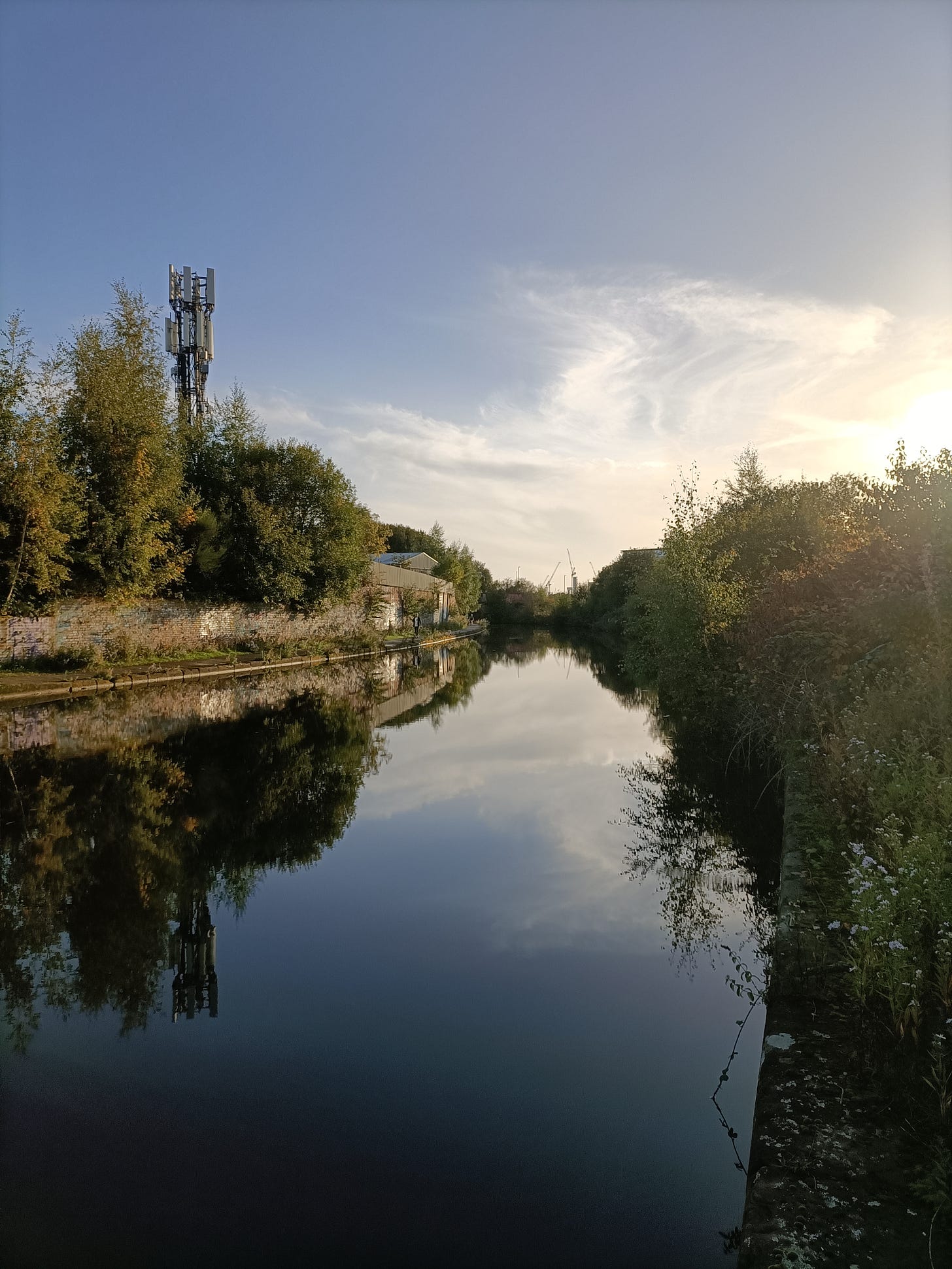
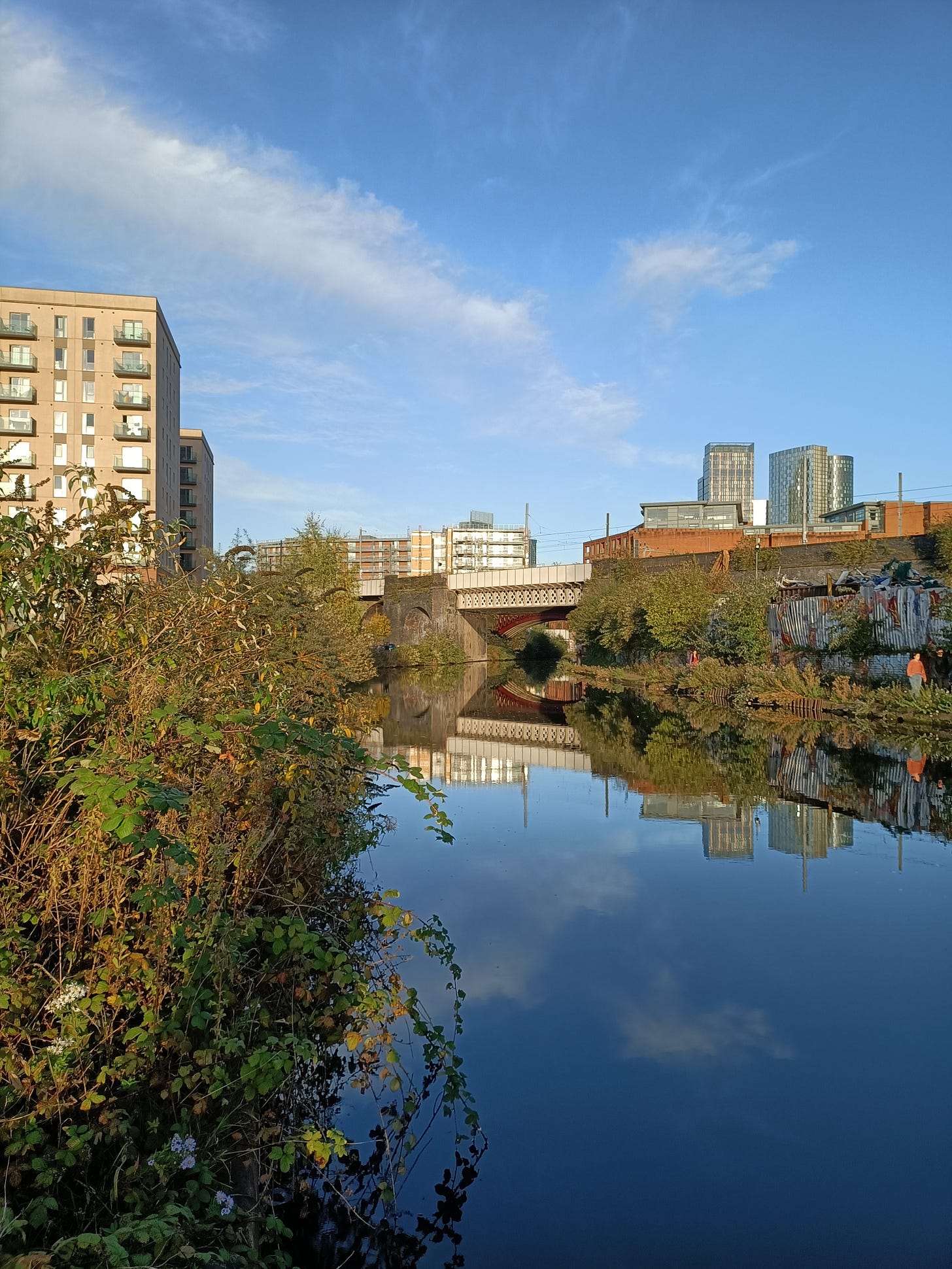
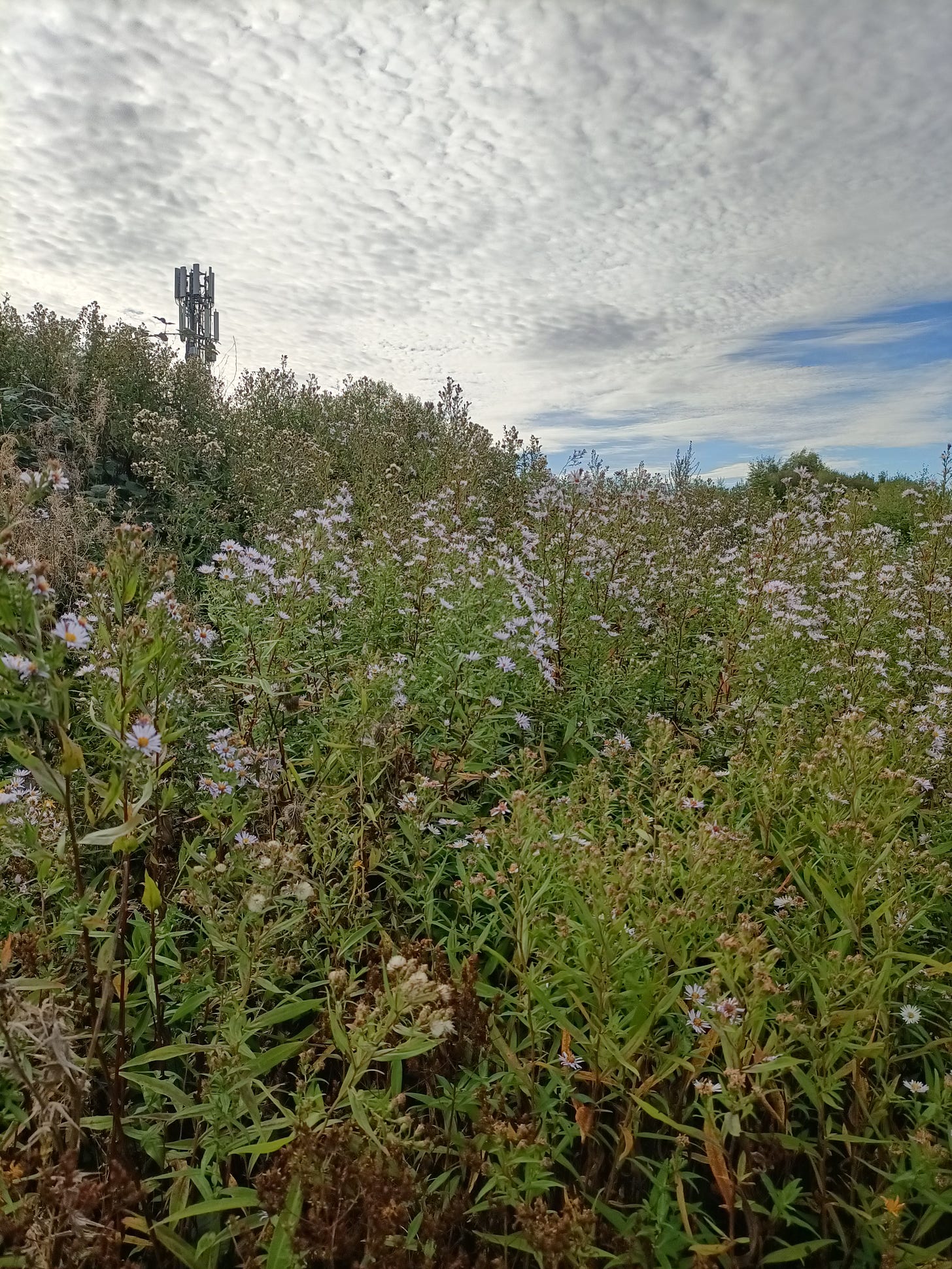
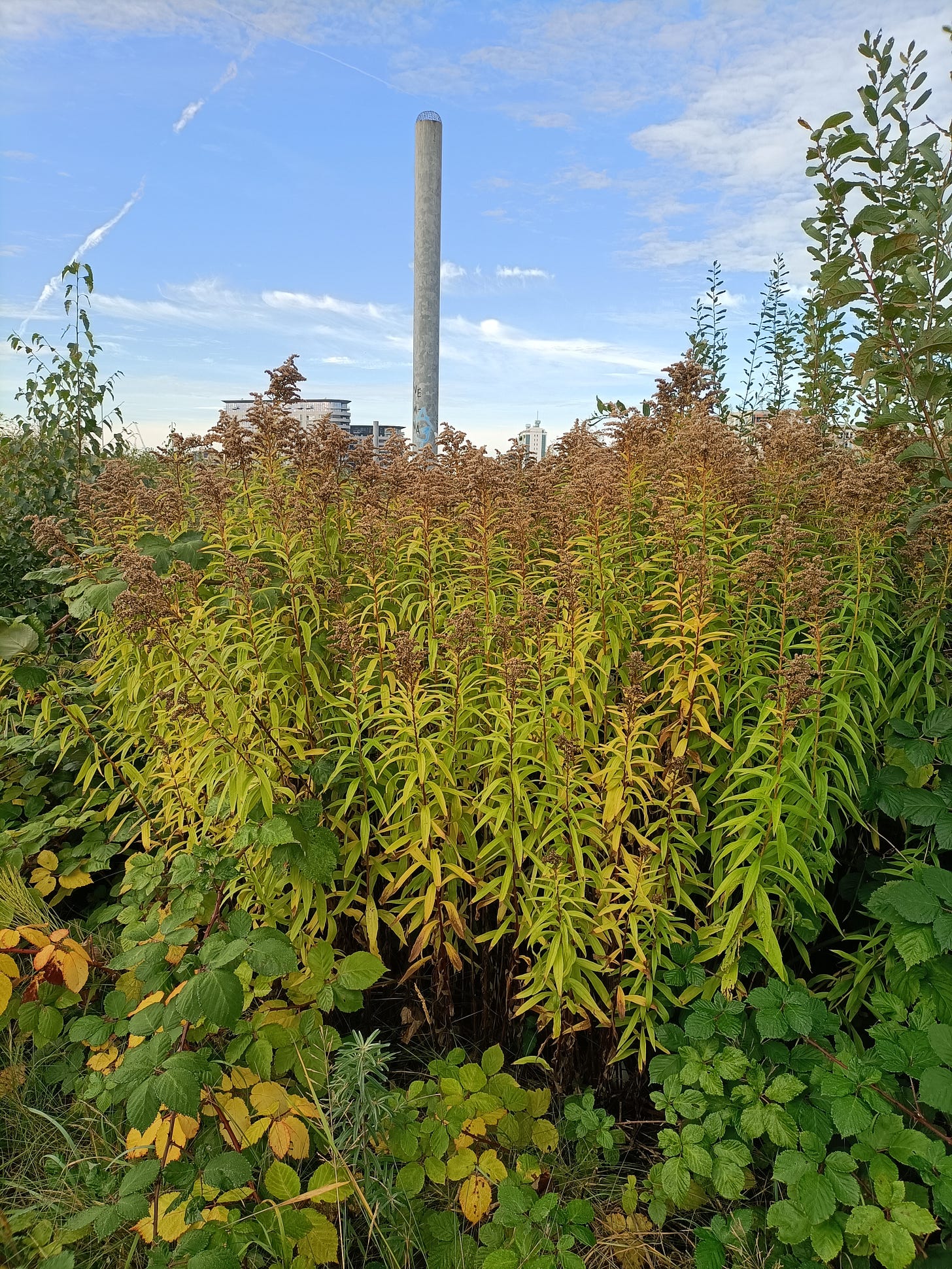
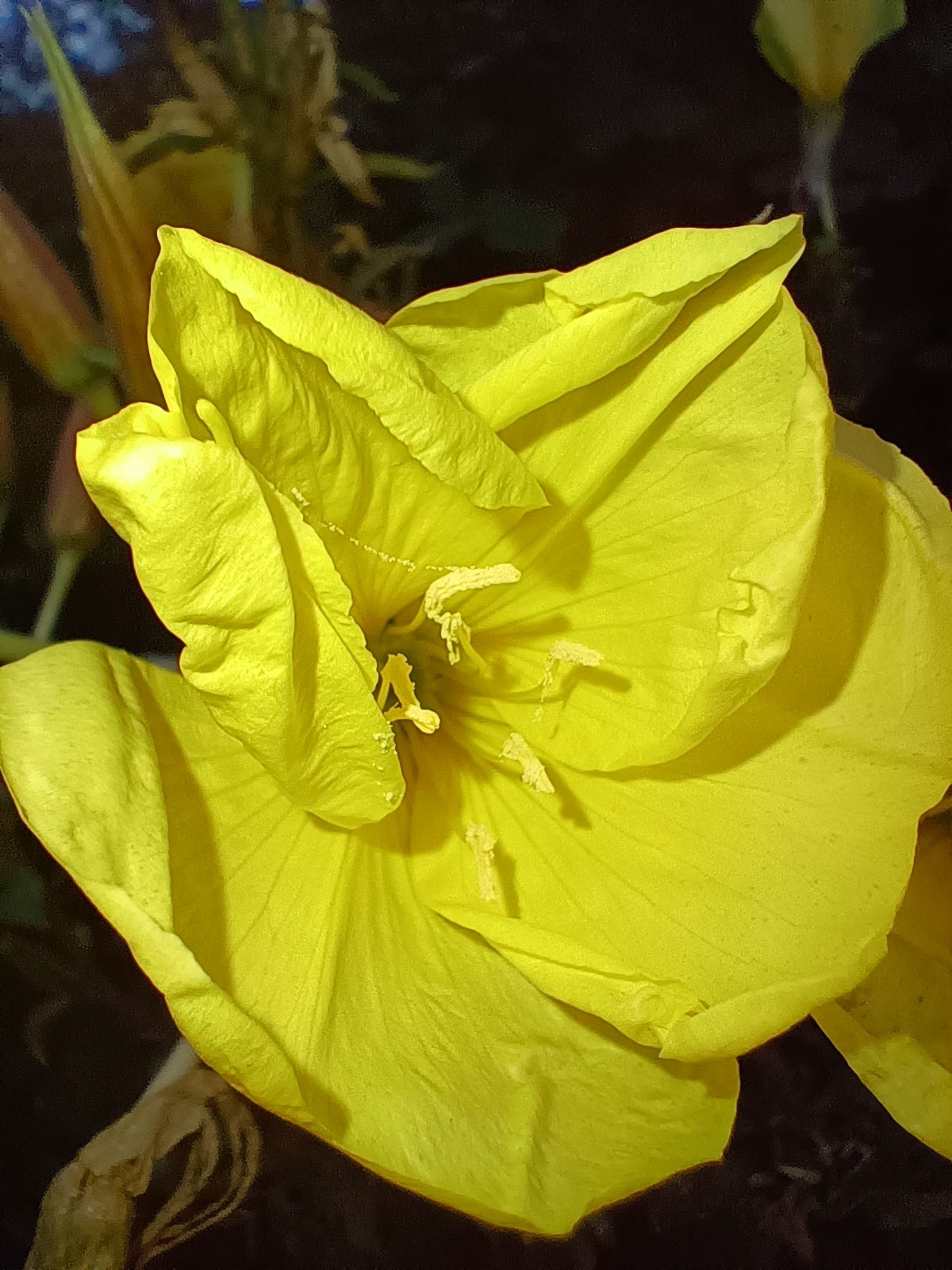
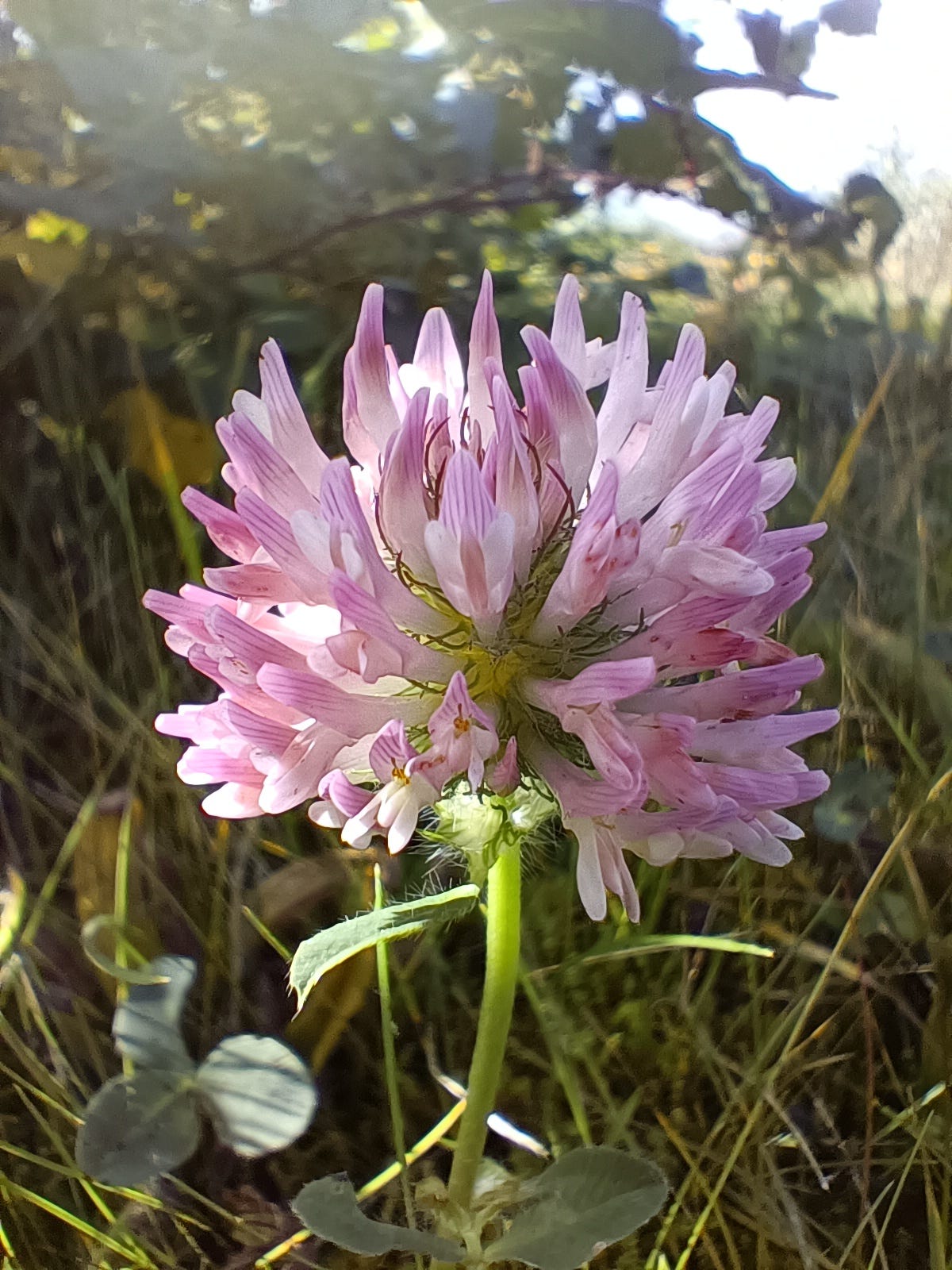
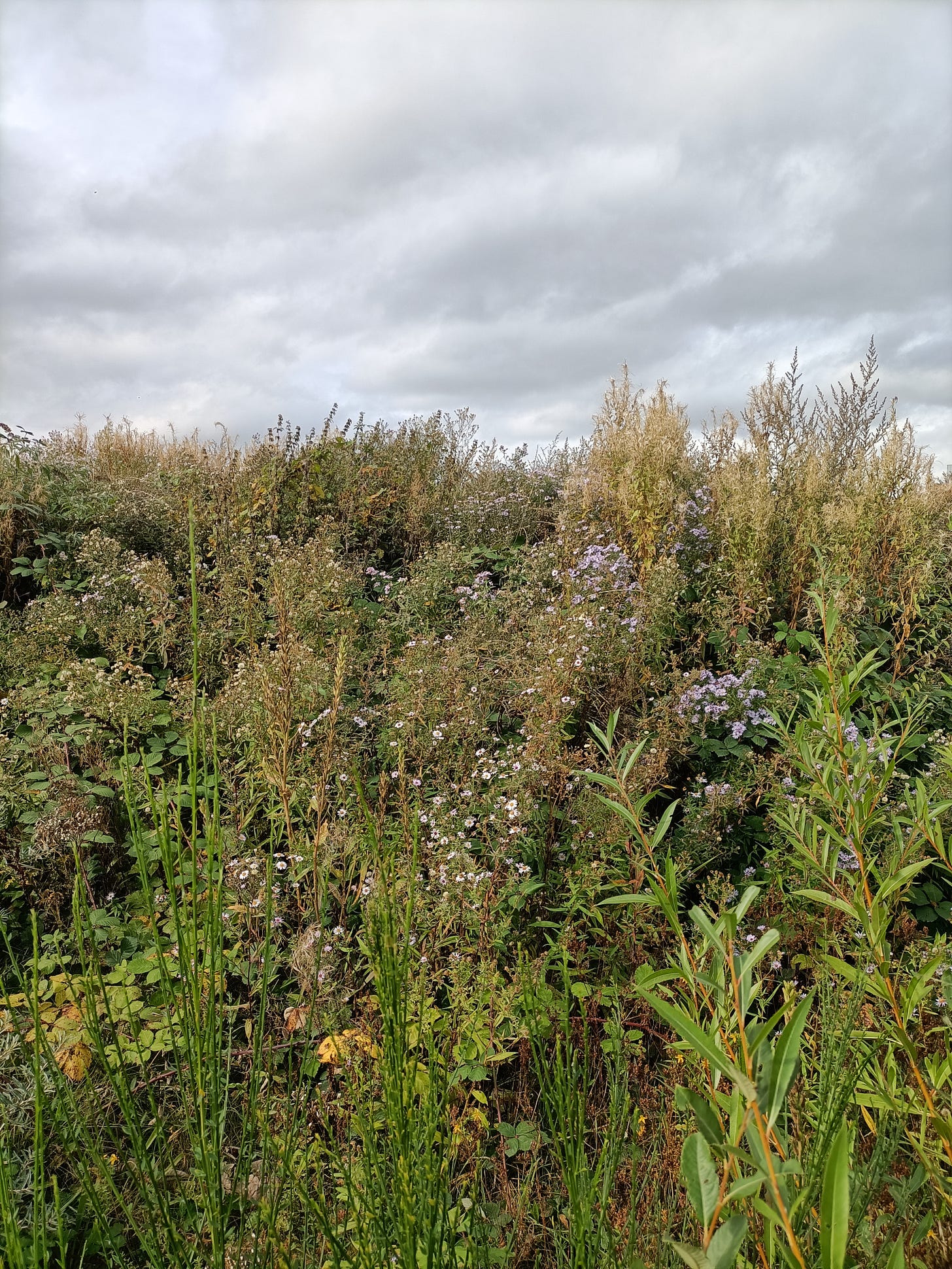
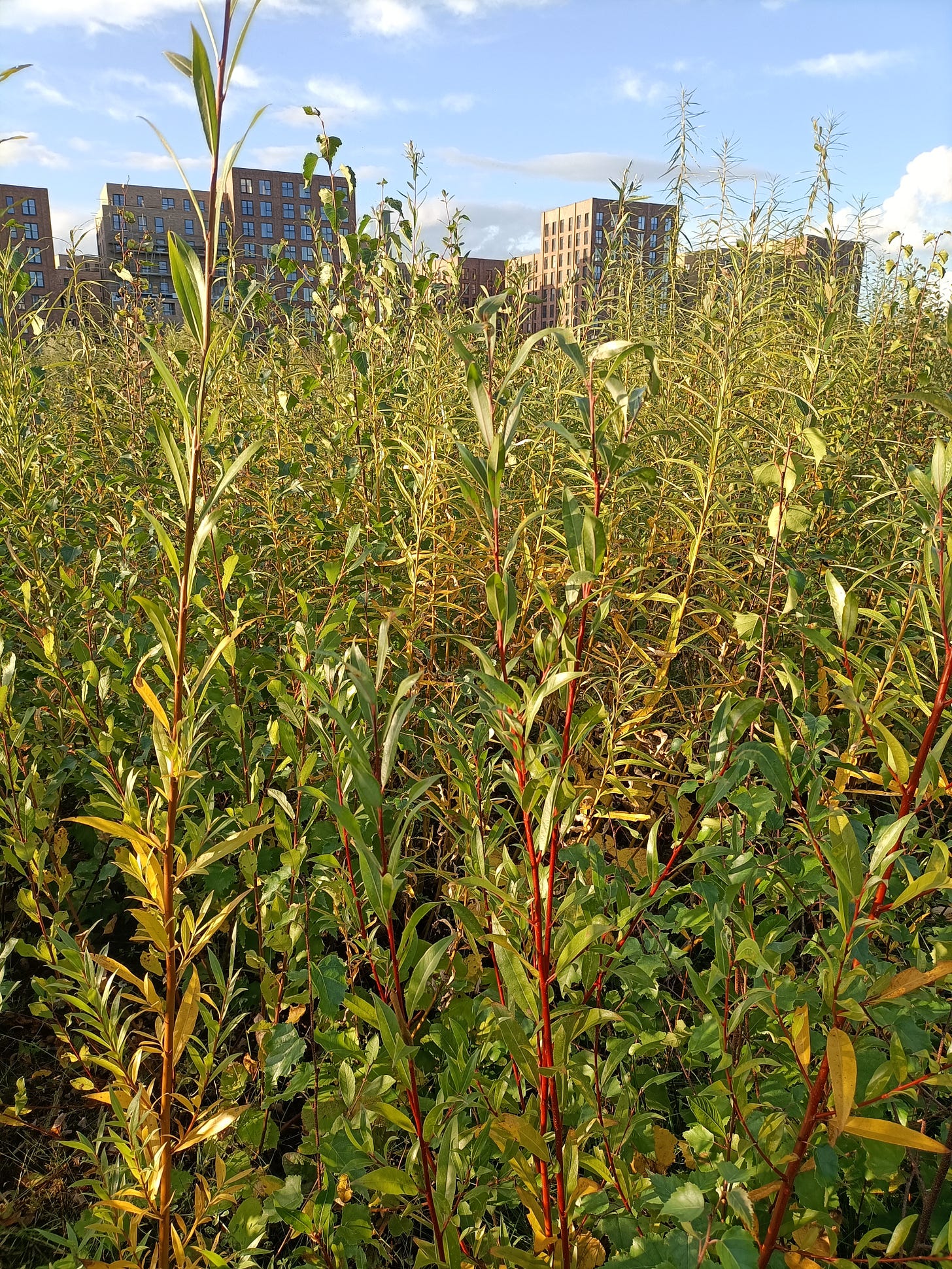

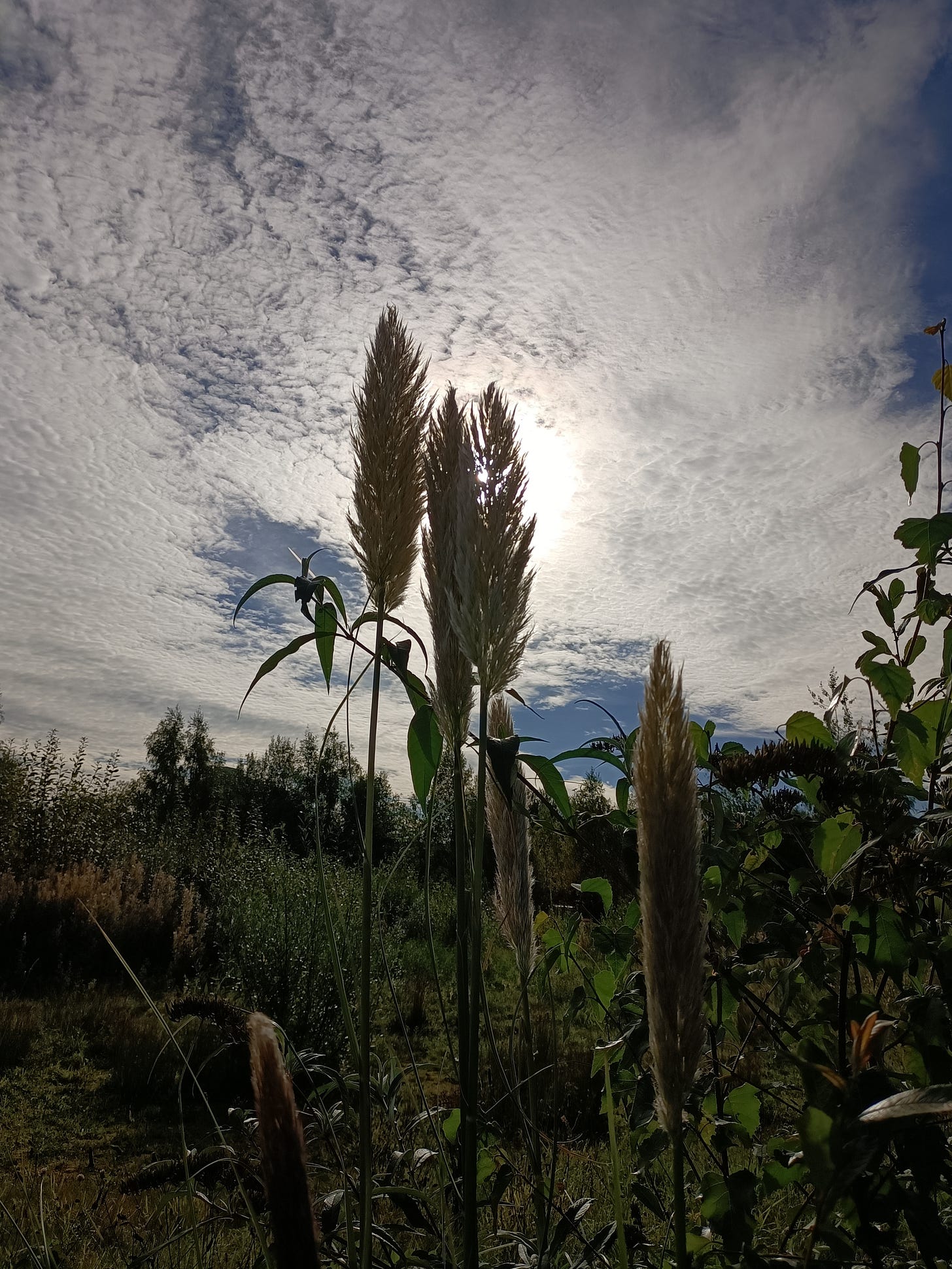
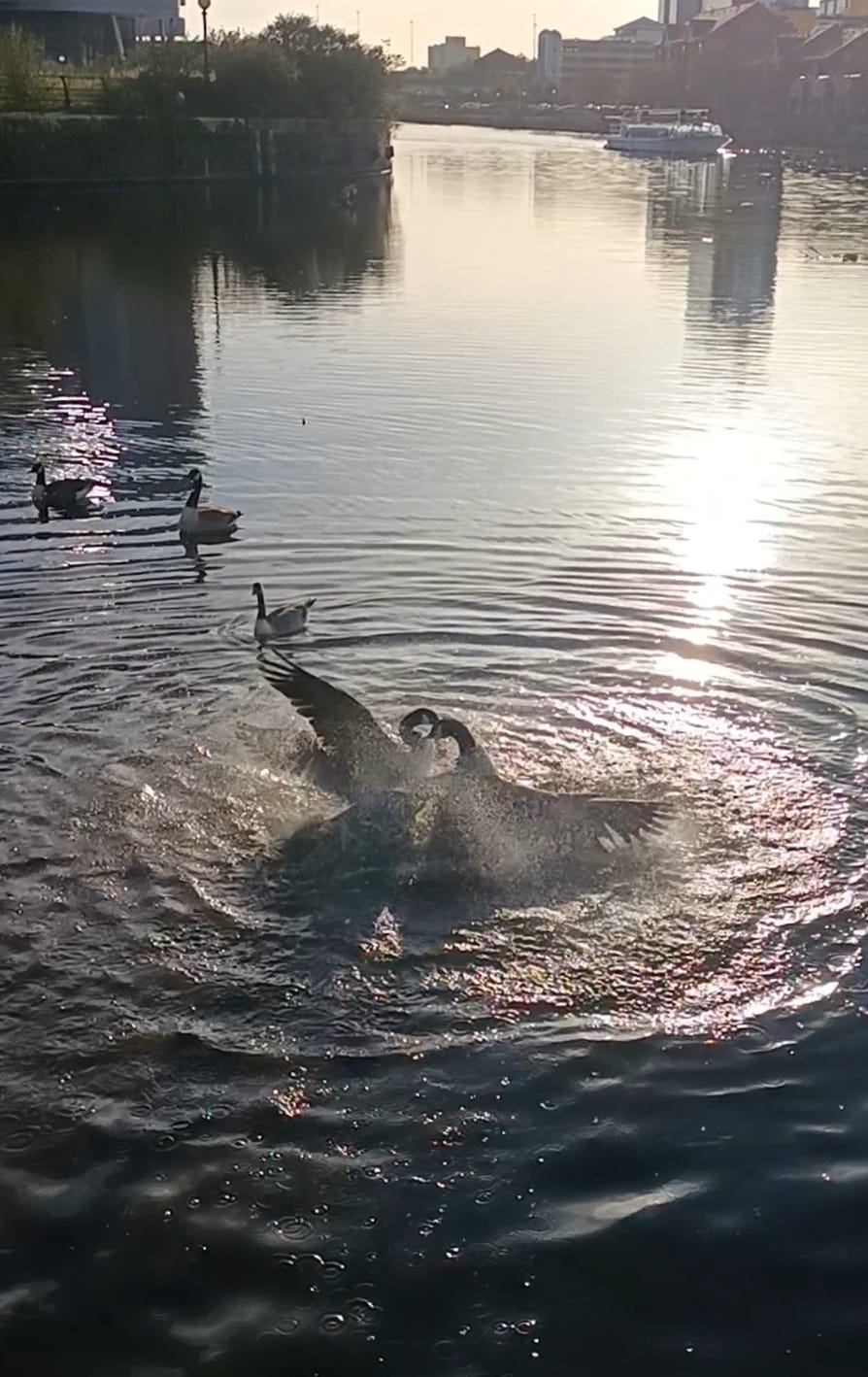
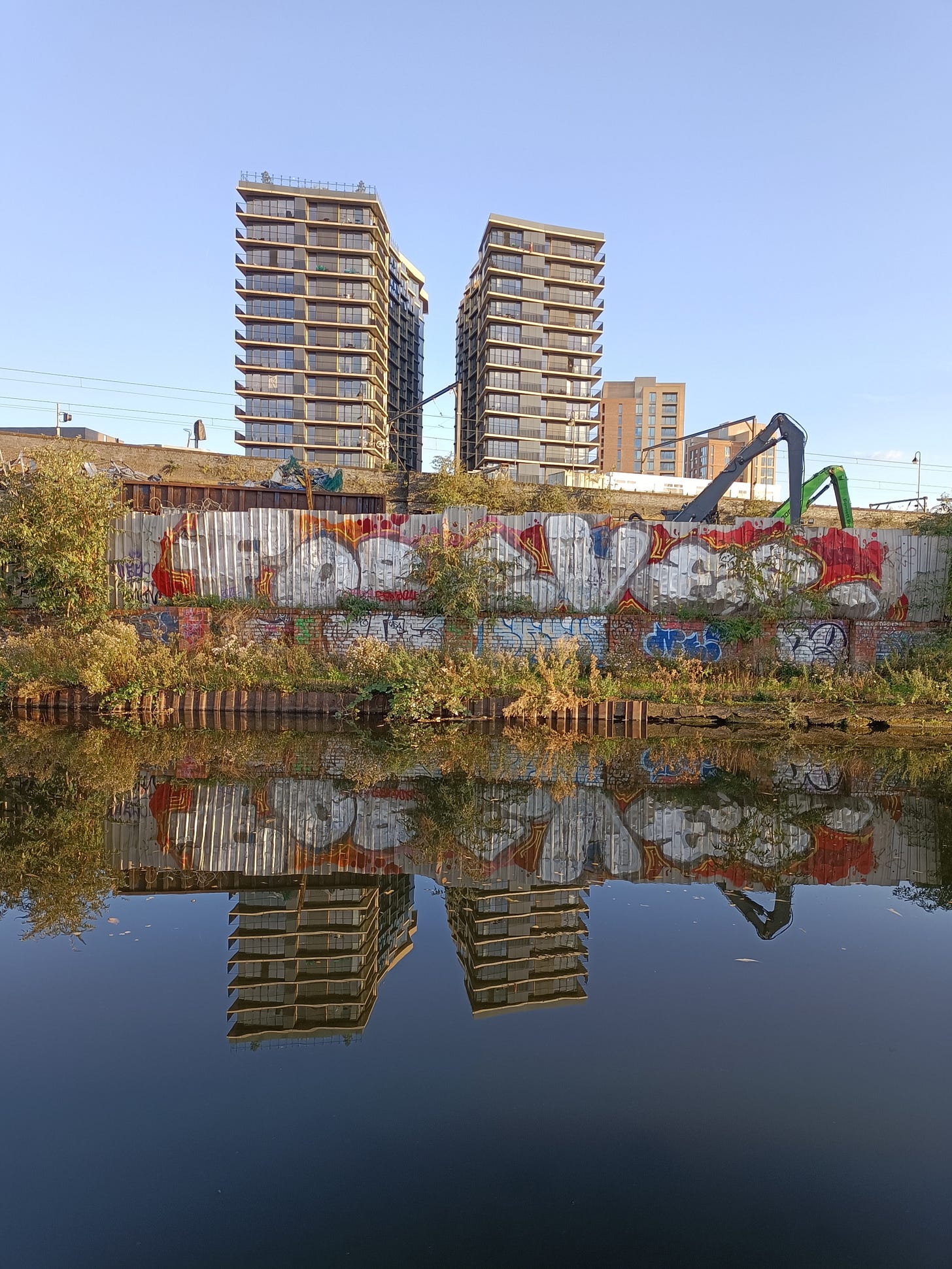
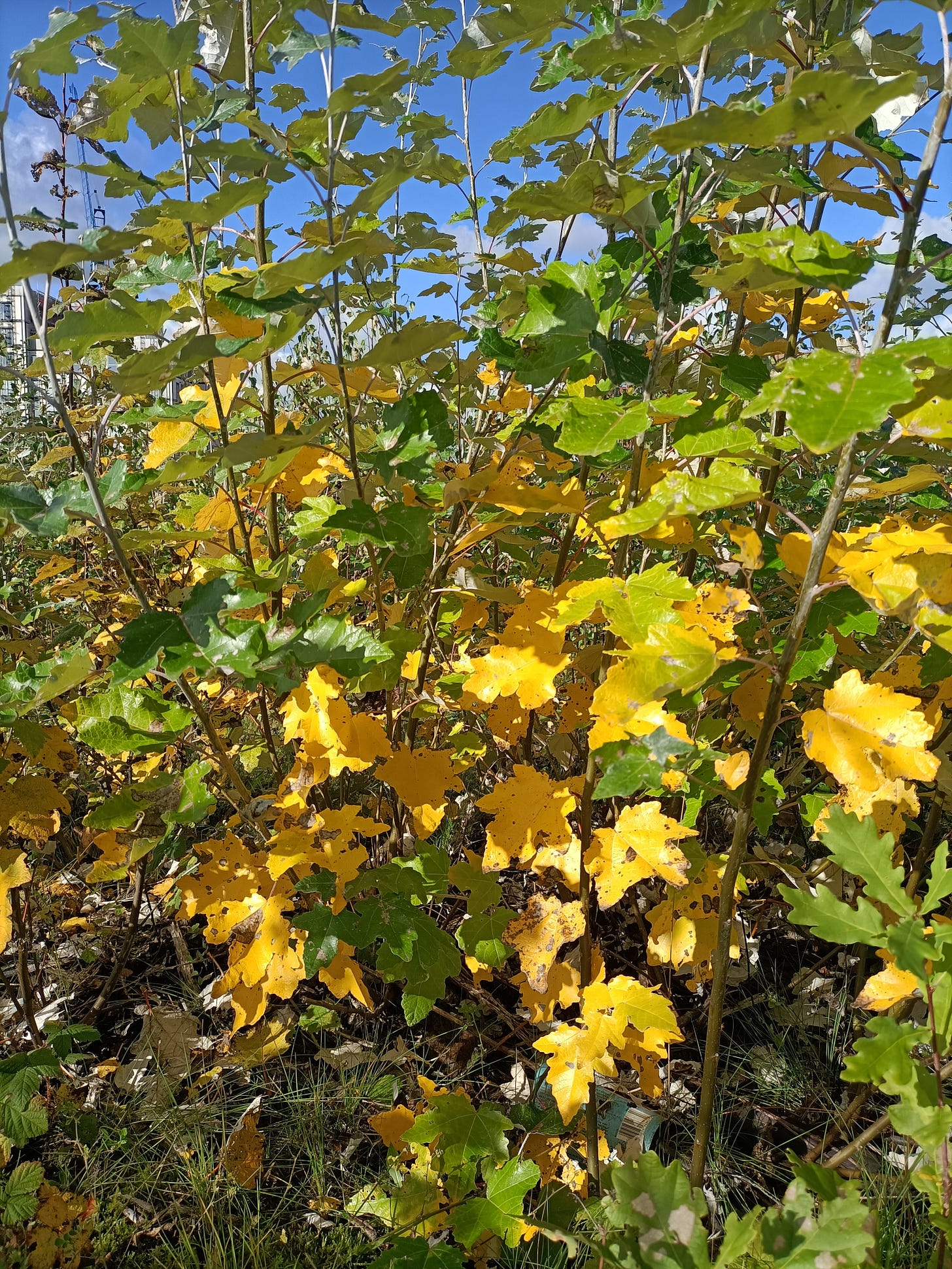










Share this post